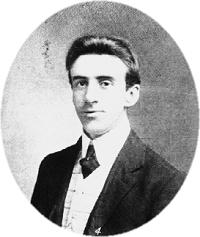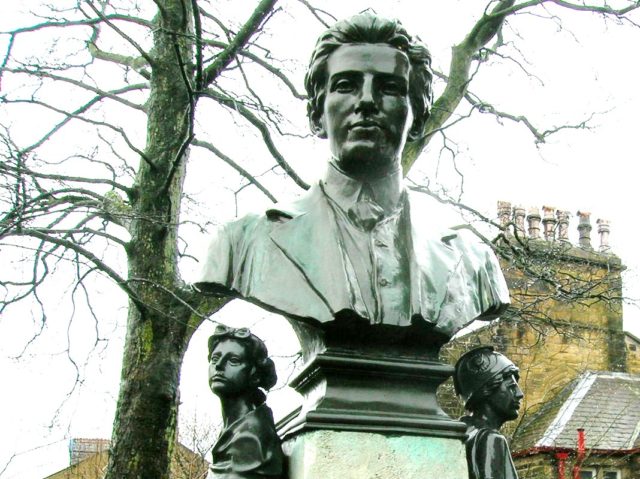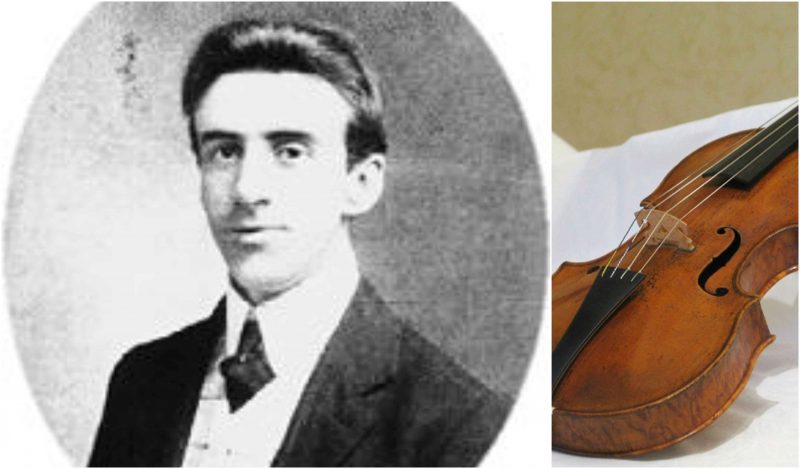One of the most romantic scenes from the 1997 blockbuster film “Titanic” is the one where the band plays for the last time, as the ship sinks. A little-known fact is that this actually happened; English violinist Wallace Hartley was the leader of the eight musicians who had the job of entertaining the passengers on the luxurious vessel, but who ended up playing music in order to keep people calm while the ship went underwater.
Hartley sank together with the Titanic on April 15, 1912, and his body was recovered two weeks later, with his violin case still strapped to his corpse.

After the death of the violinist, the instrument was sent back to England to his fiancé, Maria Robinson. When Robinson died in 1939, her sister gave the violin to the Bridlington Salvation Army, telling its leader the entire story behind the instrument. Some years later the violin became the possession of a violin teacher, who later passed it to another woman, whose son found the instrument in his attic in 2006.
Coming in 2016: The Titanic’s most prized artifact, the Bandmaster’s Violin http://t.co/hvpMfy6RQL pic.twitter.com/sGeJffPmxD
— TakeMe2Branson (@takeme2branson) July 30, 2015
The discovery caught the attention of the Henry Aldridge & Son auction house, which began an investigation in order to confirm the authenticity of the instrument. It took seven years to gather evidence and two years of forensic analysis before the company proclaimed the violin to be the original one, owned by Wallace Hartley. The announcement was made in March 2013, and the Wiltshire auction house stated that the violin was found in a leather case engraved with the initials W.H.H.
#DidYouKnow that a violin that was reported to have been played during the Titanic’s final hours was sold for $1.7m? pic.twitter.com/oPguFfCXT9
— Gold4CashNY (@Gold4CashNY) September 12, 2016
Maria Robinson made an engraving on the instrument herself in 1910, which reads, “For Wallace on the occasion of our engagement from Maria.” The German-made violin passed several more tests before officially being recognized as the violin from the Titanic. Silver experts from the Gemological Association of Great Britain confirmed the originality of the metal plate found on the base of the instrument and certified that the engravings Robinson made did indeed date from 1910. A further CT scan showed the inside of the violin, with experts examining the construction in their search for signs of possible restorations.

Once the authenticity of the instrument was proven, Henry Aldridge & Son sold the violin to an unidentified buyer on Oct. 19, 2013. The initial price for the violin was set at $65,000 but the bids surpassed every expectation, eventually being sold for $1.7 million. That makes it the most expensive Titanic memorabilia ever sold. The sale was closed after a fierce telephone bidding war between two potential buyers. The violin was later exhibited in Belfast, Northern Ireland, at the shipyard where the RMS Titanic was constructed, before making a trip to the United States, where it was publicly displayed for the first time after it was sold.
Wallace Hartley was initially hesitant to join the Titanic’s crew and leave his fiancé. However, in pursuit of future job contracts, he decided to join the luxurious ship with his band. His body was received by his father in Liverpool, who later took it back to his hometown of Colne, Lancashire. Hartley’s funeral was held on May 18, 1912, and was attended by one thousand people, while approximately 40,000 more waited in line to take part in the burial ceremony. A ten-foot-tall headstone was erected above his grave at the Keighley Road cemetery, with a carved violin at its base.
